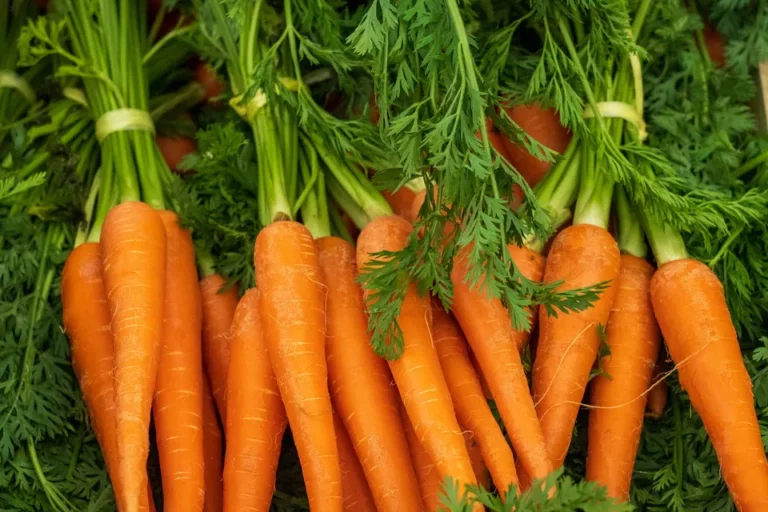Understanding The Nutritional Value Of Whole Foods
You’re probably hearing a lot about ‘whole foods’ these days, but what does that term really mean? In its simplest form, whole foods refer to foods that are as close to their natural state as possible, not modified, fortified, or processed. Think fresh fruits and vegetables, whole grains, lean meats, and the likes.
Now, why should you care? This isn’t just about jumping on a trend; it’s about making powerful choices for your health. Whole foods are packed with essential nutrients that your body needs to function at its best. They’re the VIPs of the nutrition world; providing vitamins, minerals, and fibers that processed foods often lack. And that’s only scratching the surface.
Making the shift from processed items to whole foods can seem daunting, but it’s worthwhile. Fresh, whole foods contain fewer additives and preservatives, which means they’re typically lower in sugar, salt, and unhealthy fats. This is the kind of change that doesn’t just affect your waistline; it can also have a profound impact on overall health and wellness.
I’m not just talking about personal health benefits here. Choosing whole foods is beneficial for our planet too. Sustainable farming practices are more commonly used to produce these foods, which supports local ecosystems and reduces the environmental footprint associated with food production.
So as we move forward, remember that diving into the world of whole foods is about nourishing your body, being kind to the earth, and cultivating a sustainable food culture. Next up, I’ll walk you through the specific nutritional components of whole foods. Understanding what’s on your plate is crucial for making informed decisions about your diet.
Nutritional Components of Whole Foods
When you pick up an apple and compare it with a slice of apple pie, it’s not just about the calories. Whole foods like that apple are teeming with a variety of nutrients essential for your health. Let’s look at what’s packed inside these powerhouse foods.

Macronutrients are the big three: carbohydrates, proteins, and fats. These are the nutrients that provide you with energy. Now, not all macronutrients are created equal. The ones you find in whole foods, like complex carbs in quinoa or healthy fats in avocados, are of superior quality compared to their processed counterparts.
Alongside macronutrients, whole foods are rich in micronutrients – these are the vitamins and minerals that your body needs in smaller quantities, but they’re crucial for optimal functioning. Think about the iron in spinach or the Vitamin C in oranges – these aren’t just numbers on a nutrition label; they’re components of a complex nutritional puzzle your body relies on.
Whole foods offer a symphony of benefits because they are consumed as nature intended – unrefined and unprocessed. This means all the beneficial fibers, phytochemicals, and other bioactive compounds are intact, providing you with the full spectrum of nutritional benefits. These elements work together, often much more effectively than when isolated as supplements.
Now, let’s break down some champions in the nutritional world. There’s the blueberry with its famed antioxidants, the humble sweet potato bursting with Vitamin A, and the walnuts rich in omega-3 fatty acids. All these foods are not only delicious but also play key roles in providing a balanced and healthful diet.
Understanding the Role Whole Foods Play in Disease Prevention
I’m here to help you with an often overlooked superhero in our everyday lives: whole foods. These aren’t just powerhouses of nutrition; they’re your allies in the fight against chronic diseases. You’re going to find out about how integrating them into your diet can be a life-changer, and I’ve got the science to back it up.

So let’s start with fiber. It’s not the most glamorous nutrient, but it’s a linchpin in disease prevention. Whole foods like fruits, vegetables, legumes, and whole grains are loaded with it. Fiber helps regulate your digestive system, lowers cholesterol levels, and keeps you feeling full longer to prevent overeating. A diet high in fiber from whole foods can lower your risk of developing heart disease and type 2 diabetes.
Antioxidants are next up, and boy, do they pack a punch. These naturally occurring substances in whole foods, like vitamin C in oranges or lycopene in tomatoes, are front-line defenders against oxidative stress and inflammation, the villains behind many chronic diseases. Regular consumption of antioxidant-rich foods supports your body’s ability to combat the development of diseases like cancer.
Then there are the unsung heroes: the myriad of plant compounds found in whole foods, from polyphenols in berries to isoflavones in soy. These compounds help lower blood pressure, reduce inflammation, and support overall health. It’s not just about avoiding illness; it’s about equipping your body with everything it needs to thrive.
I’ve seen and heard countless stories of people transforming their health by making this simple shift to a whole foods-focused diet. Imagine reducing your risk of chronic ailments just by choosing an apple over apple juice, or a plate of quinoa and veggies over a pre-packaged meal. It’s these choices that can add up to a significant impact on your health over time.
Choose something that resonates with you. If you’re excited about the health benefits of whole foods but unsure how to incorporate them into your meals, don’t worry too much about upheaving your entire diet in a day. I’m going to segue into some practical, simple strategies you can start right away to bring more whole foods onto your plate and into your life in the next section.
Integrating Whole Foods into Your Diet
Incorporating whole foods into your daily routine might seem daunting, but it’s less about sweeping changes and more about simple tweaks. Begin with swapping out some of your go-to processed items with whole foods. Like reaching for brown rice or quinoa instead of white rice. These small swaps gradually build up to significant nutritional improvements.

When you’re stocking up on groceries, aim to fill most of your cart with whole foods. Start by choosing fresh produce, lean meats, nuts, and seeds. Don’t forget to check out local farmers’ markets too; they’re a treasure trove for fresh and often less expensive whole foods.
Now, when it comes to meal prep, it’s not just what you cook but how you cook it. Try to use methods that preserve nutrients, like steaming or grilling, rather than deep-frying. Experiment with herbs and spices to flavor your food. This way, you maintain the health benefits and discover new tastes you’ll love.
Remember, diversity is your friend here. Regularly rotating a variety of whole foods not only provides a spectrum of nutrients but also keeps meals interesting. And don’t worry too much about perfect adherence to a whole foods diet – it’s perfectly okay to enjoy processed foods in moderation. What’s vital is creating a balanced, sustainable approach that resonates with you.
While navigating these changes, it’s crucial to acknowledge that some people face hurdles in accessing whole foods. The next section of this article will explore these challenges and offer practical solutions to ensure everybody can enjoy the benefits of whole, nutritious foods.
Challenges and Solutions in Accessing Whole Foods
I’m going to be real with you: embracing a whole foods-based diet isn’t always easy. Factors like budget constraints, limited access to fresh produce, and even time limitations can make it challenging to steer clear of processed foods.

But don’t worry too much about barriers without considering the solutions at hand. If you’re wrestling with the cost, try visiting your local farmer’s market or joining a food cooperative. Many offer fresh produce at more affordable prices than big supermarkets.
Availability can be a hitch, especially in urban food deserts. Look into community gardens or initiatives like mobile markets, which are on a mission to bring whole foods closer to you. And guess what? You can always take a stab at growing some staples in your own backyard or balcony.
For those of you tight on time, meal planning is a game-changer. Dedicate a few hours to prep at the start of the week and you’re going to find out how convenient whole foods can be. Choose veggies and fruits that are in season to save on cost and enjoy peak flavor.
Remember, embracing a whole foods lifestyle is a journey, not a destination. Start small, be consistent, and adapt as you learn what works best for you and your situation.
Conclusion: Embark on Your Whole Foods Journey Today!
As we reach the end of this exploration into the wonderful world of whole foods, remember that this is just the beginning of your own journey. Incorporating whole foods into your diet isn’t a destination, it’s a path filled with discovery, delicious flavors, and vibrant health.
Embrace the process, one small step at a time. Start by swapping out processed items for their whole food counterparts, explore the bounty of your local farmer’s market, and experiment with new recipes that celebrate the inherent goodness of fresh ingredients. Remember, it’s not about perfection, it’s about making choices that nourish your body and empower you to thrive.
And as Hippocrates, the father of medicine, wisely said, “Let food be thy medicine and medicine be thy food.” Let this quote serve as a guiding principle on your journey. Choose whole foods to nourish your body, mind, and spirit, and experience the transformative power of eating in harmony with nature.
Thank you for reading, and feel free to share your questions, successes, and challenges in the comments below.






